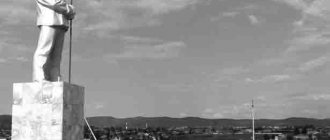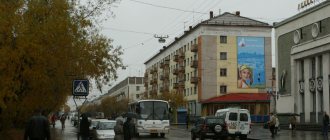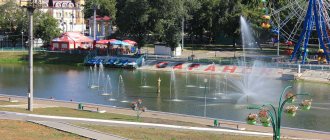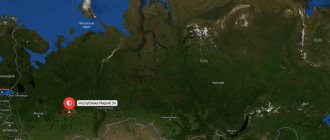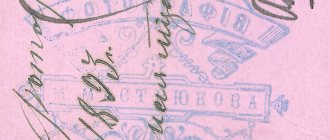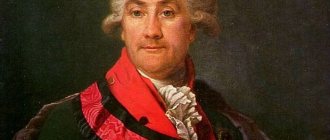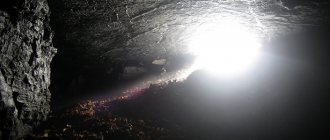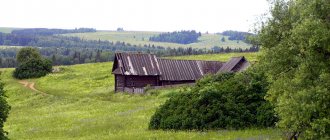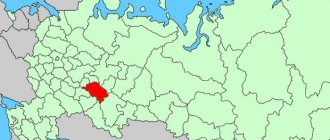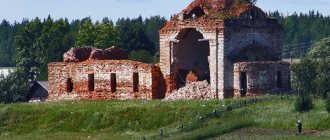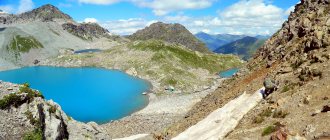08:50 Andrey Ku
What region codes are 21 and 121? Which city corresponds to the number “21”, which can often be found on license plates in our country? We will try to answer this question in the most detailed form.
The Chuvash Republic (aka Chuvashia), with its capital in the city of Cheboksary, is marked on license plates with the number “21” or “121” - a code obtained by simply adding the number “1” at the beginning of the main code.
What holiday is it today?
January 22, 2022, Saturday
Today are holidays, events: Day of Unification of Ukraine Tomorrow: Premiere of the opera “Eugene Onegin” at the Bolshoi Theater
Today is the Orthodox holiday: Martyr Polyeuctus. St. Philip, Metropolitan of Moscow and All Russia, wonderworker... Tomorrow: St. Gregory, Bishop of Nyssa. Venerable Markian the presbyter. Venerable Dometian, Bishop of Melitino. St. Paul of Komel, wonderworker, student of St. Sergius of Radonezh. Saint Theophan, the Recluse of Vyshensky...
Today is a national holiday: St. Philip's Day... Tomorrow: Gregory - Summer Guide...
Seasons
Seasons, four periods of the year (spring, summer, autumn and winter) characterized by certain average temperatures. The period during which the Sun passes through one of these sectors is called the season. Spring in the Northern Hemisphere and autumn in the Southern Hemisphere begin when the Sun passes through the initial circle of declination and its right ascension is 0° (vernal equinox). Summer in the Northern Hemisphere and winter in the Southern Hemisphere occur when the sun's right ascension is 90° (summer solstice). Autumn in the Northern Hemisphere and spring in the Southern Hemisphere begin when the sun's right ascension is 180° (autumnal equinox). The beginning of winter in the Northern Hemisphere and summer in the Southern Hemisphere is considered to be the winter solstice, when the direct ascension of the Sun is 270°... Next: Seasons. Russian folk calendar. Monthly words...
General information about the Chuvash Republic
Distinctive features . Who doesn’t know Vasily Ivanovich Chapaev? The brave red commander, the hero of films and jokes? This is probably one of the most popular folk characters of the 20th century, with the possible exception of Stirlitz. But few people know that the famous Chapaev was born in Chuvashia, in a small village near Cheboksary.
Monument to Chapaev in Cheboksary. Photo by shandi (https://fotki.yandex.ru/users/shandi/)
In addition to the fact that the Republic of Chuvashia is the birthplace of Chapaev, it can also be proud of its distinctive people, who make up the majority of its population. The lands of the Chuvash were part of the Volga Bulgaria, then subordinated to the Kazan Khanate.
Now in Chuvashia two languages are used - Chuvash and Russian. And although everyone here understands Russian, the Chuvash language is used more and more. This is also explained by the fact that many visitors from other parts of Chuvashia now live in Cheboksary, and Cheboksary residents themselves prefer to move to other cities, for example Kazan or Nizhny Novgorod.
Chuvashia can be called a region that has relied on agriculture. Its share in the economy of Chuvashia is 9.4%, which is two times higher than the Russian average. Industry is concentrated mainly in Cheboksary and Novocheboksarsk, although the old giant factories are now dying, and the level of industrial production in Chuvashia has dropped to 70% of 1990 levels. Today, Chuvash business is more occupied with buying and selling.
Geographical location . The Republic of Chuvashia is located in the southeast of the European part of the Russian Federation, part of the Volga-Vyatka economic region and the Volga Federal District. The republic's neighbors are the Nizhny Novgorod region in the west, the Republic of Tatarstan in the east, the Mari El Republic in the north and the Ulyanovsk region in the south.
The great Russian river Volga flows in the northern part of Chuvashia. The terrain is predominantly flat, where the highest point is 286.6 m above sea level.
A third of the territory of Chuvashia is covered with forests
Chuvashia has beautiful nature in its own way, and to preserve it, the Chavash Marmane National Park, which became one of the “7 Wonders of Chuvashia,” as well as the Prisursky Nature Reserve were created.
Population. As of 2013, the population of the region was 1,243,431 people. Of these, 72% live in cities. The ratio of male to female population is 46.5%: 53.5%.
In Chuvashia, the mortality rate is almost equal to the birth rate, even slightly lower. Therefore, there is a slight natural increase in population. So, despite the outflow of emigrants to other regions of Russia, the population of the republic has remained practically unchanged for at least thirty years.
Chuvash people in national costumes. Photo by Raushaniya (https://fotki.yandex.ru/users/raushaniyagaripova/)
However, the share of pensioners is steadily growing, and now they make up a fifth of the residents of Chuvashia. By national composition, 65.1% of the population are Chuvash. Russians make up 25.83% and live mainly in large cities. In third place in number are the Tatars (2.73%), who live compactly in the southeast of the republic.
Crime . The Republic of Chuvashia is a fairly calm region. In the criminal ranking of regions, Chuvashia is in 50th place. This is not to say that there are no crimes here at all. The most common types of crime include theft and fraud. So if you come to Cheboksary, be on your guard!
The unemployment rate in the Chuvash Republic in 2012 was only 5.86%, which is practically no different from the Russian average level. In the ranking of regions for unemployment, Chuvashia took 41st place. The average salary in Chuvashia, frankly speaking, makes you cry. 16,832 rubles per month is not what residents of one of the European regions of Russia would like to receive.
Moreover, it is extremely difficult to find industries in Chuvashia where the average salary level would exceed the level of a thousand dollars. However, so far the leaders are the IT sector (32,771 rubles/month), financial activities (30,814 rubles/month) and the production of electrical and optical equipment (28,687 rubles/month).
Property value. Average price per sq. meter of housing in Cheboksary - 50,248 rubles, in Novocheboksarsk - 42,520 rubles. A one-room apartment in Cheboksary will cost you 1.3 million rubles and more. Depending on the area, its price can reach 3 million rubles. New apartments in new buildings, for example, “three rubles” are already sold for 6 million rubles.
One of the courtyards in Kanash. Photo by Kanash-Club (https://fotki.yandex.ru/users/kanash-club/)
Climate. Chuvashia, like most regions in the European part of Russia, is located in the temperate continental climate zone. Winter here is cold, with frosts sometimes reaching 40 degrees below zero. Summer is hot, with dry winds. But if you step back from extreme indicators, the average temperature in July is +19°C, and the average temperature in January is −13°C. The amount of precipitation is 500 mm per year, most of it falls in summer.
Folk calendar about every day
Every day one season always replaces another and this determines a person’s way of life. In connection with this, a folk calendar was formed in which there were practically no nameless, unmarked days. Every day was special, had its own purpose. All this was determined by climate conditions and astrological phenomena.
A calendar is a system for counting periods of time. The first calendars arose a long time ago, in ancient times, because there was a need to measure time. The word calendar comes from the Latin words caleo - to proclaim and calendarium - debt book. This is due to the fact that in Ancient Rome the beginning of each month was especially proclaimed, and because it was customary to pay debts on the first day of the month. Different peoples counted time differently. Some calendars are based on the changing phases of the moon - lunar calendars; in others - the change of seasons - sunny; in others, the length of the year was coordinated with the change of seasons, and the counting of months was associated with the phases of the Moon. Such calendars are called lunisolar.
In Rus', the calendar was called a monthly calendar. Every day, the month book covered the entire year of peasant life, “describing” day by day, month after month, where each day had its own holidays or weekdays, customs and superstitions, traditions and rituals, natural signs and phenomena. The cyclical nature of the calendar is reminiscent of human life, where spring is youth, summer is heyday, autumn is the time of harvesting fruits (it’s good if there are some, otherwise you can live your life without collecting fruits), winter is the time of wisdom and peace. This cyclicality and rhythm determined the way of life of the farmer. The folk calendar was an agricultural calendar, which was reflected in the names of the months, folk signs, rituals and customs. Even the determination of the timing and duration of the seasons is associated with real climatic conditions. Hence the discrepancy between the names of the months in different areas... Next: Folk calendar...
Chuvash Republic
Established as the Chuvash Autonomous Region on June 24, 1920. On April 21, 1925, it was transformed into the Chuvash Autonomous Socialist Soviet Republic. Since July 15, 1929, as part of the Nizhny Novgorod Territory, since December 5, 1936 - the Chuvash Autonomous Soviet Socialist Republic. On October 24, 1990, the Supreme Council of the Republic adopted the Declaration of State Sovereignty, since February 13, 1992, the Chuvash Republic.
The Chuvash Republic is located in the east of the East European Plain, mainly on the right bank of the Volga, between its tributaries Sura and Sviyaga. Territory - 18.3 thousand km².
The Chuvash Republic (Chuvashia) occupies the northeastern part of the Volga Upland and a small part of the Trans-Volga region. The territory of the republic belongs to the zone of mixed, or coniferous-deciduous, forests. Most of the republic is located on the right bank of the Volga, which belongs to the forest-steppe province of the Volga Upland forest-steppe zone, and the left bank part belongs to the taiga zone of the southern taiga province of the lowland Trans-Volga region.
On the territory of Chuvashia there are three types of landscapes: boreal (subtaiga), subboreal northern and semi-humid forest-steppe. Boreal ecosystems (mainly pine forests) move south along sandy-outwash lowlands, and subborel ecosystems (oak forest-steppe) - along loamy uplands. The eastern border of the range of common ash passes through the territory of Chuvashia, as well as the border between the forest and the steppe, which coincides with the southern border of the distribution of spruce, the range of which covers almost the entire territory of the republic with the exception of its southwestern and southeastern steppe outskirts. The main types of plant communities are broad-leaved and pine forests with spruce, their derivatives are birch and aspen forests, which arose after cutting down primary forests and occupy about half of the forest area, alder forests, meadows, and small swamps. Broad-leaved forests consist of pedunculate oak with cordifolia linden, rough elm and c. smooth, Norway maple, common ash, with a developed undergrowth dominated by common hazel. These forests, growing within the range of spruce, had in the past an admixture of spruce; it fell out of their composition during the growth of ravine formation and a decrease in groundwater levels.
Taiga species are found along the shady ravines. Pine forests are located mainly on sandy and sandy loam soils in the north (in the Volga region) and the southern part of the Sur region. Meadow steppes and steppe meadows located in the southwestern part of the republic belong to the northern Central Russian, in the southeast - to the Volga steppe meadows and meadow steppes. The swamps are mainly of lowland type; Less common are mesotrophic and oligotrophic swamps with characteristic shrubs and shrubs - wild rosemary, blueberry, cranberry, etc.
The herbarium includes 302 specimens of vascular plants - 290 species and hybrids from 52 families and 169 genera, which constitutes about 20% of the total vascular plant flora of the republic. The collection geography of these plants covers most of the territory of the republic: 15 administrative districts (out of 21) and 3 cities (out of 5). Half of the plants - 150 species and hybrids - were collected in the Chavash Varmane National Park - this is about 20% of the flora of the national park. The collections cover the main phytocenotic complexes of broad-leaved, coniferous-deciduous, pine and secondary forests, glades, swamps, floodplain and steppe meadows, meadow steppes, and anthropogenic landscapes.
The herbarium includes 54 species listed in the Red Book of the Chuvash Republic, and another 25 rare species that need protection in the territory of Chuvashia. The adventitious fraction of the flora is represented by 34 species and hybrids, including 14 rare ones. Eight species and hybrids of plants are new to the flora of Chuvashia.
The fauna of Chuvashia is a combination of the faunas of broad-leaved and mixed forests, as well as forest-steppes with steppe areas. Includes about 5,000 species, of which about 4,500 are arthropods, 51 are unicellular, 31 are worms, 41 are mollusks, and about 400 are vertebrate species.
Vertebrates. The most studied areas are specially protected areas of nature, such as the Prisursky Reserve and the Chavash Varmane National Park. On the territory of the reserve, 167 species of birds, 44 species of mammals, 24 species of fish, 9 species of amphibians (red-bellied toad, common toad, green toad, common spadefoot), and 7 species of reptiles (common viper, common snake, copperhead) are registered. The main protected species is the muskrat. The objects of hunting are squirrel, hare, marten, fox, elk, wild boar, and forest ferret. Previously, the forests were inhabited by brown bear and European deer.
Fish. In the rivers Volga, Sura, Tsivil, ponds and lakes and other reservoirs passing through Chuvashia, 53 species of fish were noted, of which are included in the Red Book of the Chuvash Republic such as brown trout (brook trout, apparently an extinct species), whitefish, beluga, sturgeon Russian, blackback herring, common eel, thorn, Russian bystryanka, common sculpin, sterlet, chub, common minnow, common bitterling, common podust, lake minnow. Common species include bream, pike, crucian carp, tench, river perch, pike perch, rudd, carp, bleak, sabrefish, burbot, ide and others. Among the imported species are rotan, sprat, grass carp and silver carp.
Amphibians. 10 species have been recorded - crested newt, common newt, common spadefoot, red-bellied firebird, common toad, green toad, grass frog, sharp-faced frog, lake frog, pond frog (an edible frog, a hybrid of the last two species).
Reptiles. 7 species were noted: sand lizard, viviparous lizard, spindle, common viper, common grass snake, common copperhead, marsh turtle.
Birds. 275 bird species have been registered, of which 74 species are included in the Red Book of the Chuvash Republic. Among the birds: owl, gray heron, hawk, crossbill, bullfinch, swallow, sparrow, lark, swift, yellowtail, cuckoo, black grouse, hazel grouse, capercaillie, thrush, nuthatch, tits, redstart, hazel grouse, partridge, corncrake, falcon, white stork and others.
Mammals. The territory of the Chuvash Republic is home to 66 species from 6 orders and 19 families. Among them are wolf, fox, brown hare, brown bear, lynx, badger, marten, elk, wild boar, forest ferret, marmot, jerboa, gopher, mole, hamster, hedgehog, chipmunk, etc.
Insects. On the territory of Chuvashia, more than 4,000 species of insects from 28 orders have been recorded: 2,500 species of beetles (109 families, including the largest ones - ground beetles, swimming beetles, rove beetles, lamellar beetles, leaf beetles, longhorn beetles, elephant beetles; it is recommended to include the following species in the Red Book of Chuvashia: stag beetle , green bronze, common hermit, etc.) and more than 1600 species of butterflies.
Arachnids. Spiders (Aranei) - more than 260 species, including the hunter's fringe (Dolomedes fimbriatus), house spider (Tegenaria domestica), common spider, silver water spider (water spider), South Russian tarantula.
Fishing calendar for every day
The fishing calendar should not be taken as an absolutely indisputable truth. Fish biting is greatly influenced by a whole range of natural factors, as well as the influence on the nature of man himself. You must not forget that the fish’s bite depends and is determined not only by the calendar dates and biological cycles of their life, reflected in the calendar, but also, no less, by the state of their habitat; the bite also depends on weather conditions: air and water temperatures, cloudiness, wind direction and strength, etc... Next: Fishing calendar...
Cities of the Chuvash Republic
Cheboksary is the regional center and the largest city in the region. Population - 473,688 people. The city was once a center of mechanical engineering and instrument making. But now everything is not so simple, production has decreased, and the food industry, trade and tourism are becoming increasingly important in the city’s economy.
The city has a lot of greenery, beautiful parks and monuments. In general, there is something to see. And the city’s infrastructure is well developed: there are many scientific institutions, theaters, and festivals are held regularly. Due to the reduction in production and, accordingly, harmful emissions, the environment is also doing well. Of the minuses, it is still necessary to note the economic factor - Cheboksary here is significantly inferior to Nizhny Novgorod and Kazan.
Novocheboksarsk is a large industrial center located on the banks of the Volga River. Population - 123922 people. If in Cheboksary everything is fine environmentally, then in Novocheboksarsk it’s the other way around. Being the second city in the republic in terms of production volume and having such a monster as Khimprom, residents of Novocheboksarsk are forced to suffer from various harmful substances entering the atmosphere from factory pipes and city landfills. We don’t see any more disadvantages, and it’s not for nothing that Novocheboksarsk is in the top 100 best cities in Russia.
Kanash is the third largest city in Chuvashia. Population - 45,759 people. This is a city of railway workers, with a dozen large industrial enterprises. This is not so small considering the size of the city. There are wide green streets, creating a feeling of spaciousness. There are practically no high-rise buildings in the center; most buildings are limited in height to five floors. The city's infrastructure cannot be called very well developed, but it has everything necessary for life - kindergartens, schools, even branches of universities.
Orthodox calendar about every day
Orthodox calendar: Orthodox, Church and Christian holidays.
The church year is an alternation of weekdays and holidays. On weekdays, a person is called to work “by the sweat of his brow to earn his bread.” Holidays are given in order to feel liberation, to rise above the bustle and routine of the world, to feel involved in the highest of worlds, “where there are no illnesses, sorrows and sighs, but endless life.” Since ancient times, holiday cycles have been associated with the seasons. The pagans associated them with the worship of the forces of nature, the cult of which in the Old Testament was replaced by gratitude to the Creator for the universe. And although the connection between holidays and the seasons has not completely lost its power, since God is present in everything, in the plant and animal world, in human works, it nevertheless faded into the background, giving way to a spiritual foundation built on the Sacred Scriptures. The history of Orthodox holidays dates back to the times of the Old Testament. Each of the Orthodox holidays is dedicated to the remembrance of the most important events in the life of Jesus Christ and the Mother of God, as well as the memory of saints... Next: Orthodox calendar...
Map of 21 regions
Whose city belongs to region 21? Officially, the entire Chuvash region, which is part of the Volgo-Vyatka economic region, but unofficially, such a city, of course, is Cheboksary.
The map of the Chuvash Republic can be studied for a long time; the region is of interest not only from an economic, but also from a geographical point of view. Not in the north and northwest, the Volga and Sura rivers pass through this region. If the Sura supplies the city of Yadrin with a water resource, then the Volga approaches Cheboksary, flows near Novocheboksarsk and goes east, touching Kozlovka.
Settlements that are part of 21 regions and have a population of more than 3 thousand people: Cheboksary, Novocheboksarsk, Kanash, Alatyr, Shumerlya, Tsivilsk, Kugesi, Vurnary, Kozlovka, Yadrin, Mariinsky Posad, Ibresi, New Lapsary, Poretskoye, Urmary, Batyrevo, Shygyrdan, Komsomolskoye, Krasnoarmeyskoye, Shemursha, New Atlashevo, Morgaushi, Yantikovo, Ishley.
21 regions (Chuvash Republic) are located almost entirely on the right bank of the Volga, in the very east of the East European Plain. The republic is located between such tributaries of the Volga as the Sviyaga and Sura.
All industry in the region is mainly concentrated in Cheboksary and Novocheboksarsk. The region has a well-developed tractor industry, chemical activities, as well as apparatus construction for military and civilian industries.
The total population in the Chuvash Republic is more than 1.3 million people. In 1920, the 150th region became an autonomous region (as part of the USSR), and in 1925 - an autonomous republic.
The highest administrative apparatus in the republic is the State Council of the region. The Cabinet of Ministers of the Chuvash Republic functions as the executive branch.
The Chuvash Republic (21 regions) includes 21 administrative districts, 9 large cities (5 of republican significance and 4 of regional significance), 5 large towns and more than 1.5 thousand villages. The city of Cheboksary, as we noted earlier, is the capital of the region. Thanks to its economic development and industry, in 2001 the city won the federal competition as “The most comfortable city in the Russian Federation.”
See all area codes here.
Russian folk calendar for every day
The word “sign” comes from the word “notice”, i.e. observe. As a result of observing what happens around a person every day, he accumulates life experience. This knowledge was passed down from generation to generation, carefully preserved and people trusted it as a sacred book. Many signs have come to us from the depths of centuries without losing their knowledge. Each of us is free to choose: to dismiss all this as an absurd superstition or to take a closer look at the signs and take the centuries-old experience of generations more seriously. Most of us, when taking exams, ask them to scold them, boasting about some kind of good fortune or luck, spit so as not to jinx them or knock on wood, take a detour if a black cat crossed the road, are afraid of the number 13 and much more. And who among us does not have lucky things, numbers? Who has never resorted to the help of fate at least once in their life, who has not believed in secrets? It’s as if everything connected with signs is hidden somewhere deep in our subconscious. Often we remember them mechanically, unconsciously, or just as a joke. But, undoubtedly, the signs contain a lot of accurate knowledge and practical wisdom of our ancestors. They cover all the characteristic, often difficult to perceive, natural phenomena. Signs have preserved a lot of what was in old folk holidays and customs; they help predict the weather, grow crops... Next: Folk signs...
Holiday calendar, dates and events of the year
All state and professional holidays in Russia, including significant World and International holidays, and other equally interesting holidays and events about every day.
The holiday has always kept pace with the history of mankind. Social time can be divided into three types: everyday life (weekdays), weekends and holidays. Everyday life is a series of practices repeated day after day and every day (work). Weekends are regular breaks from the rush of everyday life. It is believed that on weekends a person should restore his strength after working days. Day off, non-working day. A holiday is a day of celebration established in honor or in memory of someone or something. A day or series of days celebrated by the church in memory of a religious event or saint... Next: Calendar...
Prayer book, Orthodox prayers for every day
Prayer is the most powerful means for healing all illnesses - both physical and mental. Prayers can be laudatory or grateful, petitionary and repentant. If we have offended God, sinned, we must ask Him for forgiveness, that is, repent. Such prayers are called repentant prayers. If everything is fine with us, if we and our loved ones are healthy and prosperous, if we have a place to live, something to wear, something to eat, we must glorify and thank God for this. Such prayers are called praise or thanksgiving. If some misfortune, illness, trouble or need happens, you need to ask God for help. Such prayers are called petitionary... Next: Orthodox prayers...
Zodiac, astrological, eastern calendar. Zodiac signs
In ancient times, to establish the calendar, priests used knowledge of the positions of all the planets. Before the reform of Peter 1, the New Year was celebrated on the Day of the Autumn Equinox. On this day, according to ancient legend, the most peaceful treaty was concluded between the Great Race (ancient Slavs) and the Great Dragon (ancient Chinese) and it was approximately 7518 years ago... For the ancient Slavs, the calendar month corresponded to the lunar cycle from new moon to new moon, taking into account such Thus, the relationship of the entire annual cycle with astronomical and natural phenomena. There was no coherent calendar system. The main natural phenomena are still considered to this day to be the days of the solar equinox and solstice - the Slavic holidays Maslenitsa, Kupala, Ovsen and Kolyada. But during the time of Peter 1, all ancient Slavic calendars were abolished and a new Western European calendar from the Nativity of Christ (Julian calendar) was introduced, while the beginning of the calendar was moved to January 1. The Julian calendar (old style) did not take leap days into account and accumulated one extra day every 128 years. After the October Revolution in 1918, the Gregorian calendar (new style) was introduced in Russia, according to which an amendment of 13 days was introduced. The calendar of the ancient Slavs was based on two planets: the Sun and the Moon. And now they don’t use anything at all. The calendar has become static. There is no such thing as the calendar, it turns out, resting on some planet. Nobody even knows about it. There are just some standard numbers, there are months and holidays. The calendar is based on the Sun and Moon. Why is this so? Because these two luminaries influence the Earth. The Earth revolves around the Sun, and the Moon revolves around the Earth. And these two luminaries create the atmosphere on the planet. From here the calendar is built... Next: Astrological calendar...
2.A relatively small area (18.3 thousand square kilometers) is home to 1,360.4 thousand people, including about 40% in rural areas.
3.The population density (74.3 people per 1 square kilometer) is one of the highest in Russia.
4. In the Chuvash Republic there are 21 administrative districts, 9 cities (the largest cities are Cheboksary, Novocheboksarsk, Kanash, Alatyr, Shumerlya, Tsivilsk), 8 urban-type settlements, 1727 rural settlements.
5. The Chuvash Republic is surrounded by industrially developed centers of Russia: in the west it borders with the Nizhny Novgorod region, in the north with the Republic of Mari El, in the east with the Republic of Tatarstan, in the south its neighbors are the Mordovian Republic and the Ulyanovsk region.
CHEBOKSARY
6.The capital of the Chuvash Republic is the city of Cheboksary (founded in 1469) with a population of about 500 thousand people.
7. The distance from the city of Cheboksary to Moscow is about 650 kilometers.
8. Communication with other regions is carried out by rail, road, water and air transport.
9. The Chuvash are the fifth largest people living on the territory of the Russian Federation.
10.Their closest ancestors are the Bulgars. In the ancient chronicles of Rus', the first mention of this nationality occurs in 1508.
CHUVASH
11. Almost one and a half million people belonging to the Chuvash ethnic group live in our country.
12.No one can say for sure why the Chuvash are called Chuvash.
13. There are several hypotheses about the origin of the name “Chuvash”. It is believed that “Chuvash”, “Chavash” is the self-name of the people. But where did it come from? Some philologists believe that this is a modified name “suvaz”, which the Chuvash used to wear.
14. In any case, Arab travelers back in the 10th century mentioned a certain people - either Suvash or Suvaz, who lived within the Great Bulgaria and refused to accept Islam, remaining faithful to paganism. Since the Arabic language does not have the sound “ch”, then most likely they were Chuvash.
15. Only 10% of the Chuvash have Mongoloid features, 65% have a mixed type, the rest are Europeans. Oxford anthropologists believe that the Chuvash are an ancient people from East Asia with an admixture of European blood that occurred just over a thousand years ago as a result of the great migration of peoples.
BEAUTIFUL CHUVASH WOMEN
16. Despite all the antiquity of the people and the strange mixture of genes, Chuvash women are considered one of the most beautiful in Russia.
17. The author Zarif Bashiri in his writings points out that a woman in a family is always busier than a man, works equally with him in the field, takes care of children, and rarely has the opportunity to take care of herself. But, despite this, her beauty “takes over” and, incomprehensibly, the Chuvash woman ages very late. At the same time, the author notes the extraordinary skill and hard work of the Chuvash woman.
18. Representatives of this ethnic group are not much different from the inhabitants of central Russia. Caucasian type of appearance with features of the Mongoloid race and average height - these words can describe an ordinary resident of Cheboksary.
19. A characteristic feature of the nation is considered to be a straight, neat nose, a low bridge of the nose, a rounded face, clearly defined cheekbones and a small mouth. Among the Chuvash you can find blue-eyed blonds and dark-eyed brunettes.
VICTORY MEMORIAL PARK IN CHEBOKSARY
20. In 1781, Cheboksary received the status of a district city of the Kazan province. By the end of the century, the city's population was more than four thousand people. There were 14 different factories, more than 40 craft workshops and about the same number of retail shops in the city. His appearance has changed. The stone buildings of the treasury and archive, the magistrate, the circle courtyard, and 10 churches gave the poor district town a completely prosperous appearance.
21. At the beginning of the 19th century, Cheboksary experienced times of stagnation. Over the course of a century, the urban population grew by less than a thousand people, and now 400 cities of the Russian Empire have overtaken Cheboksary in terms of the number of inhabitants.
CHURCH OF THE RESURRECTION IN CHEBOKSARY
22. The city was famous for its temples. In Cheboksary, by the 20th century, 25 churches and 4 monasteries had survived, most of which were built in the 16th - first half of the 17th centuries. Only the abundance of churches, varied in architecture, rich in bells and ancient monuments, spoke of the former prosperity of the city.
23. From the Kyrgyz language, the name of the ethnic group is translated as “small”. According to modern dictionaries, “Chuvash” means “harmless.”
24. The culture of the people is truly unique. To this day, elements of Western Asia can be traced in traditional rituals. Also, the style of the people was greatly influenced by their Iranian-speaking neighbors (Scythians, Alans). From them the Chuvash adopted not only their manner of dressing, but also part of their religious rituals.
25. Before joining Rus', the people preached paganism. The supreme deity was considered Tura, the patron of the sky.
26. In ancient times, the Chuvash worshiped the spirits of nature and performed a number of rituals in their honor. As a result, the ethnic group acquired a huge number of rituals associated with the cult of the tree of life, the change of seasons, sowing and harvesting.
CHUVASH WEDDING
27.Many of the holidays have survived to this day; they are harmoniously combined with Christian rituals. A striking example is the Chuvash wedding, where the newlyweds and guests dress in national costumes and perform complex rituals.
28. Modern representatives of the ethnic group are Orthodox Christians; Muslims are found in exceptional cases, despite the close proximity to the Tatars.
29. Historians claim that in ancient times the Chuvash people had their own runic writing. The modern alphabet appeared only in 1873 thanks to the efforts of the teacher I. Ya. Yakovlev. In addition to the Cyrillic alphabet, it contains a number of unique characters that reflect the phonetic differences between the dialects.
30.The first official language of the republic is Russian, the second is Chuvash. Both adverbs are included in the school curriculum and are required to be studied. The local population speaks both languages fluently.
31. The main occupation of the Chuvash is agriculture. Judging by the research of historians, representatives of the nation have achieved good success in this direction and succeeded in it much better than the Tatars or Slavs. This is explained by the fact that the Chuvash lived in small villages located at a distance from large cities.
32.Working with land was the only way for people to get food. Therefore, no one shirked from household chores, and besides, the local lands were considered fertile and pleased the residents with a rich harvest.
33. Unfortunately, this was not enough to fully provide for the Chuvash and avoid starvation. The people specialized in growing crops such as rye, oats, barley, buckwheat and peas. Sickles, roe deer, and so on were used for work.
KOZLOVKA VILLAGE IN CHUVASHIA
34. In ancient times, the Chuvash lived in small settlements, which were usually built near river valleys and lakes. The houses were lined up in a row or in a “cluster”.
35. The traditional dwelling of the ethnic group is the purt; it was erected in the middle of the courtyard and was considered the central building. You could also find a building called a lasa; it served as a summer kitchen.
36. The Chuvash people have a number of celebrations related to agriculture: Akatui, Simek, Pukrav, Pitrav. They are celebrated to mark the beginning and end of sowing, harvesting, or the arrival of winter.
NOVOCHEBOXARSK
37. Novocheboksarsk is a large city of republican subordination in Chuvashia and the Russian Federation. This is a port on the Volga, it is located 20 kilometers from the Cheboksary railway station.
38. It arose in 1960 as a settlement for builders during the construction of the Cheboksary hydroelectric power station and as a satellite of the city of Cheboksary. It became a city in 1965. In modern Novocheboksarsk there is a production of building materials; light and food industry enterprises; chemical plant
39. Chuvash Drama Theater named after. K.V. Ivanova, founded in 1918 in Kazan as the Chuvash Soviet Mobile Theater, since 1920 in Cheboksary, since 1933 academic.
40. In 1959, the theater was named after K.V. Ivanov, the founder of Chuvash literature, author of the poem “Narspi”. From 1959 to 1969 the theater operated as a musical and drama theater.
41. Chuvash University of Cheboksary, founded in 1967. It trains personnel in engineering, construction, physics, mathematics, chemistry, medicine, economics, history, philology and other specialties.
42. Alatyr, a city in the Republic of Chuvashia, is located in the Middle Volga region, on the left bank of the Sura River, at the confluence of the Alatyr River, 195 kilometers south of Cheboksary. There is a railway station and an airport here. Alatyr was founded by Ivan the Terrible as a fortified point to protect the borders of the Moscow state at the mouth of the Alatyr River. Since 1780 it has been a county town.
43. Main industrial enterprises: JSC "Electroavtomat", "Electropribor", electromechanical "Lisma", low-temperature refrigerators, mechanical, "Alba" (production of pianos), "Furniture factory". Enterprises of footwear, textile, food industries. Deposits of peat, clay, sand and others have been discovered in the area.
44. In the city and its immediate surroundings there are 15 cathedrals and churches, including St. John the Baptist (1703), Nativity of the Virgin Mary (1747). Active monasteries: Holy Trinity Monastery (founded in 1584) and Kiev-Nicholas Novodevichy Women's Monastery (founded in 1634). Stone mansions from the late 19th and early 20th centuries have also been preserved in Alatyr. There is an arboretum here. The city also has local history and art museums.
CHUVASH HOLIDAY ULAKH
45. The Chuvash carefully preserve ancient rituals that originated during the time of their ancestors. People still observe many ancient traditions today. One of the national celebrations that was celebrated several centuries ago is Ulakh. In Cheboksary, modern youth also celebrate it.
46.The organizer of the fun is a girl who was lucky enough to be left without parents. When the older generation left the house to do their business, the young lady invited local youth to visit. The youth sang to the accordion, danced and had fun. Initially, the purpose of the event was to find a soul mate. In the modern world, this is simply an opportunity to have a lot of fun without the supervision of fathers and mothers.
FOUNTAINS IN CHEBOKSARY
47. Another traditional custom of the Chuvash is Savarni. This is a festival dedicated to seeing off winter. Folk festivities take place with dancing, songs and numerous games. People dress up a stuffed animal symbolizing Mother Winter. Also on this day it is customary to ride horses harnessed to sleighs.
48. Chuvash Easter or Mancun holiday is one of the brightest and purest celebrations. On the eve of the celebration, the housewives cleaned the house, the men put things in order in the yard. Careful preparations are made for the holiday, kegs are filled with beer, and various pies are baked. Women also paint eggs and prepare national dishes.
49.Mancun stretches for seven days, during which people have fun, dance, sing and hold various competitions. Before the holiday, swings were installed on the streets, which not only children, but also adults could ride on.
50. Chuvash culture has long penetrated into our everyday life - many in Russia love cheesecakes with potatoes and cottage cheese, dumplings, fish boiled in milk - traditional Chuvash dishes.
photo from the Internet
Dream books online, interpretation of dreams
A dream book is nothing more than an interpreter of dreams and dreams, a translator of dreams. Since ancient times, people have been using dream books; dreams have always been given great importance, and people have often noticed the prophetic properties of some dreams. The dream book can become your faithful assistant every day and throughout your life, thanks to the dream interpreter you can always make the right decisions, the dream book will help you resist temptations in time, and will warn you against wrong steps and frivolous actions. Further…
